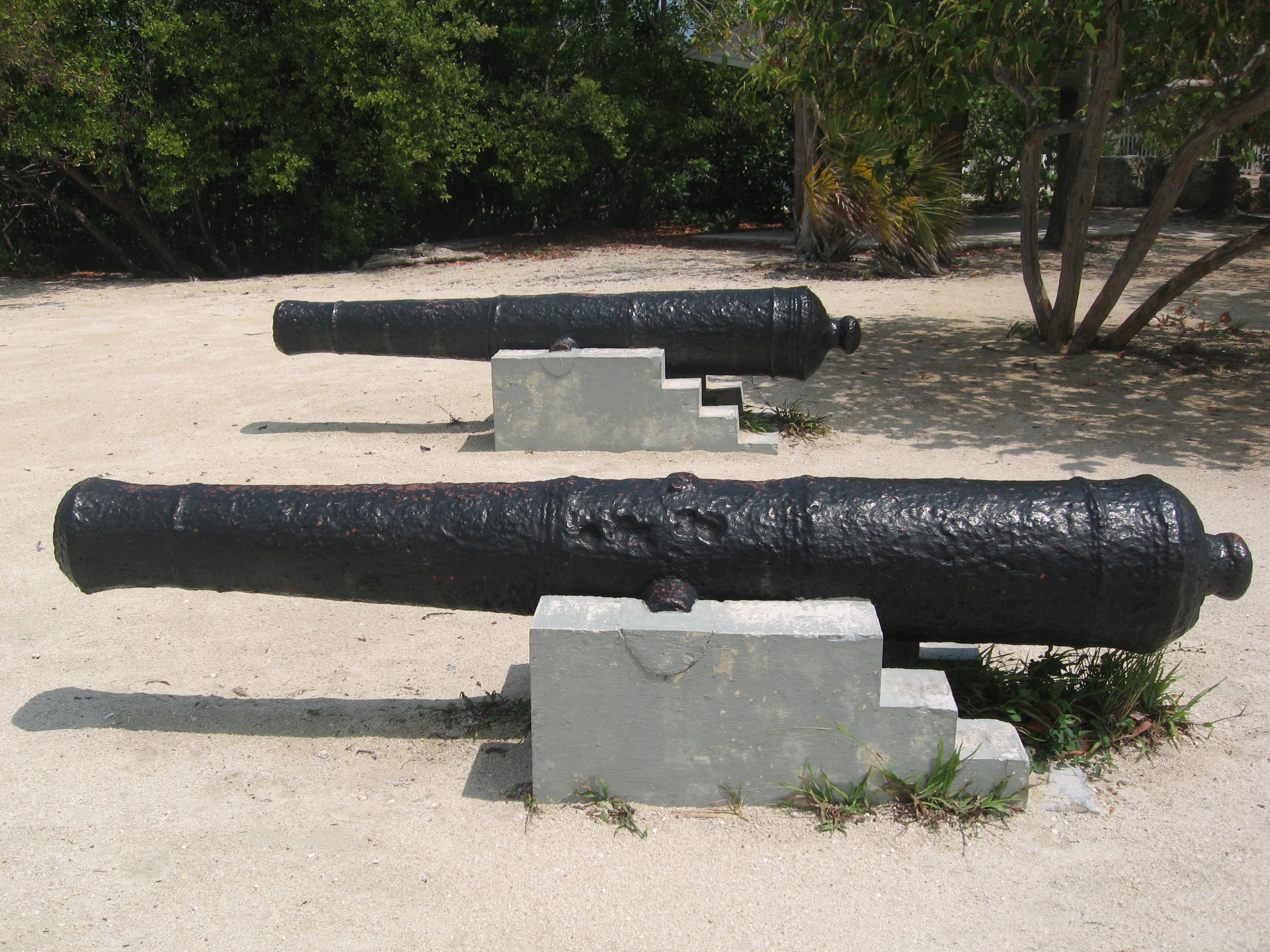The 18th Century Mock Spanish Shipwreck, established in the late 1970s, contains submerged artifacts recovered by modern-day salvers under permitting from the State of Florida and donated for placement within John Pennekamp Coral Reef State Park. Fourteen of the fifteen submerged cannons were recovered from the 1715 Spanish Fleet, which was destroyed by a hurricane on July 31st and wrecked on the east coast of Florida, near present day Vera Beach. The anchor was recovered from the 1733 Spanish Fleet, which was destroyed by a hurricane on July 14th with wreckage from the fleet ranging from Key Biscayne South to the Lower Matacumbe Key in Florida. The fifteenth cannon was recovered and added to the site in 2003. Discovered in seven feet of water approximately one mile north of North Sound Creek in Key Largo, Florida, this cannon was decidedly placed within the Mock Spanish Shipwreck site for preservation and protection. The submerged artifacts were placed offshore from Cannon Beach, a popular swimming area connected to Largo Sound within the park. They are orientated to resemble an authentic Spanish Shipwreck, with the cannons pointed outward from a central axis and the anchor placed on the Northeast end of the site. A historic marker buoy and bronze dedication plaque, provided by Indiana University in 2015, designate the location and significance of this site as a Living Museum in the Sea.
In addition to the submerged artifacts, four land-based cannons from the HMS Winchester are present on both ends Cannon Beach. The Winchester, a fourth rate, 60-gun ship of the English Royal Navy, launched in 1693 and sank in 1695 on Carysfort Reef in Key Largo.




